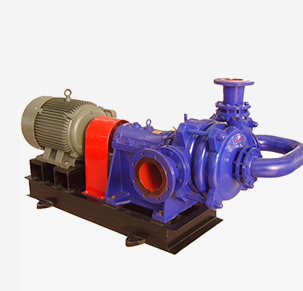Urdu
- Afrikaans
- Albanian
- Amharic
- Arabic
- Armenian
- Azerbaijani
- Basque
- Belarusian
- Bengali
- Bosnian
- Bulgarian
- Catalan
- Cebuano
- Corsican
- Croatian
- Czech
- Danish
- Dutch
- English
- Esperanto
- Estonian
- Finnish
- French
- Frisian
- Galician
- Georgian
- German
- Greek
- Gujarati
- Haitian Creole
- hausa
- hawaiian
- Hebrew
- Hindi
- Miao
- Hungarian
- Icelandic
- igbo
- Indonesian
- irish
- Italian
- Japanese
- Javanese
- Kannada
- kazakh
- Khmer
- Rwandese
- Korean
- Kurdish
- Kyrgyz
- Lao
- Latin
- Latvian
- Lithuanian
- Luxembourgish
- Macedonian
- Malgashi
- Malay
- Malayalam
- Maltese
- Maori
- Marathi
- Mongolian
- Myanmar
- Nepali
- Norwegian
- Norwegian
- Occitan
- Pashto
- Persian
- Polish
- Portuguese
- Punjabi
- Romanian
- Russian
- Samoan
- Scottish Gaelic
- Serbian
- Sesotho
- Shona
- Sindhi
- Sinhala
- Slovak
- Slovenian
- Somali
- Spanish
- Sundanese
- Swahili
- Swedish
- Tagalog
- Tajik
- Tamil
- Tatar
- Telugu
- Thai
- Turkish
- Turkmen
- Ukrainian
- Urdu
- Uighur
- Uzbek
- Vietnamese
- Welsh
- Bantu
- Yiddish
- Yoruba
- Zulu
Telephone: +86 13120555503
Email: frank@cypump.com
ستمبر . 02, 2024 05:59 Back to list
Basement Ejector Pump
Understanding Basement Ejector Pumps A Key Component for Homeowners
A basement ejector pump is an essential component for many homes, particularly those with below-ground levels. Its primary function is to remove wastewater and prevent flooding, ensuring a clean and dry environment. Basement ejector pumps are crucial for homes that have bathrooms, laundry rooms, or other plumbing fixtures located below the main sewer line, as they help to elevate waste to a higher level for proper drainage.
These pumps work by collecting wastewater in a sump basin, which is typically located at the lowest point of the basement. When the water level in the basin reaches a predetermined height, the pump is activated. Using a sturdy motor, the ejector pump then forces the wastewater through a discharge line, allowing it to flow uphill towards the main sewer line or septic system. This process is not only efficient but also minimizes the risk of sewage backup, which can lead to health hazards and extensive property damage.
When choosing a basement ejector pump, homeowners must consider several factors. First and foremost is the pump's power capacity. Pumps are rated for their horsepower, which typically ranges from ½ to 2 horsepower. A higher horsepower rating usually equates to a more robust pump capable of handling larger volumes of wastewater. Additionally, homeowners should assess the vertical height the pump needs to discharge the waste, known as the head. The higher the head, the more powerful the ejector pump must be.
basement ejector pump

Another important aspect to consider is the pump's construction material. Quality ejector pumps are made from durable materials such as cast iron or stainless steel, ensuring longevity and resistance to corrosion. Furthermore, homeowners should look for pumps with built-in features like a check valve, which prevents backflow, and an automatic float switch that initiates the pump operation only when necessary.
Routine maintenance is critical for the longevity and efficiency of a basement ejector pump. Homeowners should regularly check the pump for any signs of wear and tear and ensure that the sump basin is free from debris. Additionally, performing an annual inspection by a professional can help identify potential issues before they become significant problems.
In conclusion, a basement ejector pump is a vital installation for homeowners seeking to protect their property from water damage and sewage backup. By understanding its operation, selecting the right model, and maintaining it properly, homeowners can ensure their basements remain safe and dry. Whether for an existing home or a new construction project, investing in a quality ejector pump can save homeowners from potential headaches down the road.
-
Horizontal Split Case Pump with GPT-4 Turbo | High Efficiency
NewsAug.01,2025
-
ISG Series Pipeline Pump - Chi Yuan Pumps | High Efficiency, Durable Design
NewsAug.01,2025
-
Advanced Flue Gas Desulfurization Pump with GPT-4 Turbo | Durable & Efficient
NewsJul.31,2025
-
ISG Series Vertical Pipeline Pump - Chi Yuan Pumps | Advanced Hydraulic Design&Durable Construction
NewsJul.31,2025
-
ISG Series Vertical Pipeline Pump - Chi Yuan Pumps | Energy Efficient & Low Noise
NewsJul.31,2025
-
pipeline pump - Chi Yuan Pumps Co., LTD.|High Efficiency&Low Noise
NewsJul.31,2025










